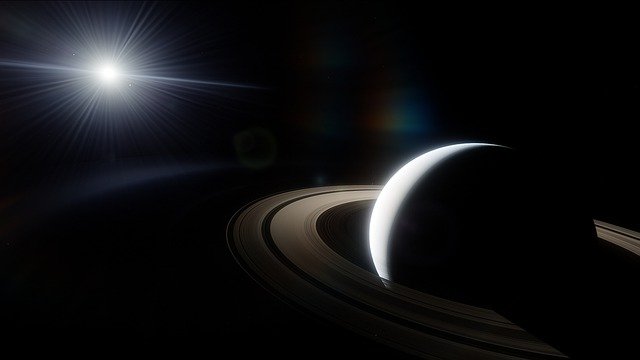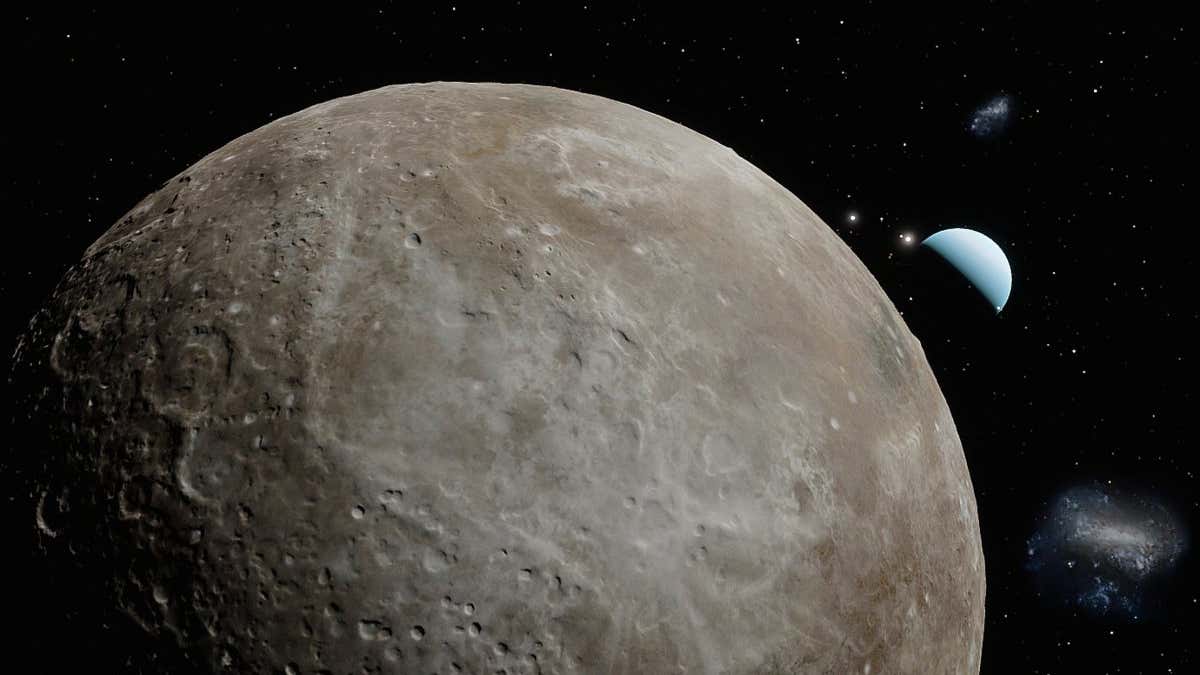*This post may contain affiliate links. This means we may make a commission if you purchase an item using one of our links*
The main differences between Saturn and Titania is That Titania is a terrestrial based moon composed of rock and ice whilst Saturn is a gas based planet, Titania is far more dense with a density of 4.23 g/cm³ compared to Saturn’s 0.687 g/cm³, Saturn has 81 moons surronding it whilst Titania has 0 and Saturn has 7 distinctive rings surrounding it whereas Titania has 0.
There are various different features between the two so, continue reading for a more detailed look at each celestial body along with their similarities and differences below.
What Is The Planet Saturn?
Table of Contents

Saturn is the second largest planet in our solar system, that has a multitude of rings surrounding its gaseous exterior. It’s also the 6th farthest planet from the Sun.
As Saturn falls under the gas giant moniker, the planet is mostly made up of gases. However, Saturn’s composition is a little different from Jupiter’s where its atmosphere is mixture of hydrogen and ices containing elements of Ammonia.
It’s core on the other hand is comprised of a dense core of nickel and iron, which is then surrounded by rocks compressed so strongly that it can tends to reach scorching hot temperatures of 11,700+ degrees celsius.
On the other hand, It’s gaseous atmosphere is far cooler. The exterior generally sits in the extreme sub zero range where Saturn’s temperatures is -138 degrees celsius.
This is generally constant throughout the yellow ringed giants day to day. In fact it’s much colder than even the coldest place on Earth, which would be Eastern Antarctic Plateau, Antarctica that hits -94 degrees Celsius, which is more than 40 degrees celsius warmer.
Being so large (116,460km), Saturn’s gravitational pull is obviously strong. That’s why over it’s 4.5 billion years of existence, beyond its rings this yellow gas giant has managed to accumulate 82 different moons along with other smaller interstellar debris that now orbit it.
In fact it’s largest moon Titan is literally bigger than one of the 8 planets orbiting the Sun, Mercury.
Saturn also orbits the Sun but, as the 6th farthest planet from it, it does mean a singular orbit will take it 29.4 Earth years to complete. In comparison to its axial orbit which only takes 10.7 hours, this is an extremely long time.
What Is The Moon Titania?

Titania is the biggest of Uranus’s moons, with a circumference of 4,956km and a diameter of 1576.8km.
The high density of this moon suggests that it most likely formed from a collection of dust and debris leftover from the formation of Uranus or from the debris created in the collision that reportedly tilted Uranus onto its side. As a result Titania has a mass of 3.4 × 10^21 kg.
First discovered on 11th January 1787 (the same day as the discovery of Oberon, the second biggest moon of Uranus) by British astronomer William Herschel, the name “Titania” comes from the Shakespeare play, A Midsummer Night’s Dream. (Most of Uranus’ moons are named after Shakespeare’s characters.)
Having observed Titania for many years, scientists theorize that its composition is likely to be equal parts ice and rock, the latter of which may contain carbonaceous materials and organic compounds.
Research suggests that the moon most likely has a rocky core (accounting for 66% of the moon’s radius) and an icy mantle. If the mantle contains ammonia, it will act as antifreeze and make it possible for liquid water to exist. In this instance, the moon could possess a layer of liquid ocean around 50km thick.
Titania tilts slightly towards the equator of Uranus and is tidally locked to its planet. This means a Titania day is 8 days and 17 hours which would be the same for its orbital cycle. Titania has an average temperature of -203 degrees Celsius.
The planet Uranus is also tilted, with the moons orbiting on the equatorial plane, giving it extreme seasons. On Titania, the north and south poles experience 42 years of complete sunshine followed by 42 years of total darkness.
Scientists have observed the presence of large amounts of carbon dioxide, suggesting this may be the primary component of this moon’s atmosphere. Thanks to the tilted orbit, and a concentration of solar radiation from the poles, Titania probably maintains a carbon dioxide cycle, similar to the hydrogen cycle on Earth.
Similarities Between Saturn And Titania
There are a few similarities that Saturn and Titania share, which in this case includes the following:
- Both are a spherical shape.
- Both have a hotter core.
- Both are part of the same solar system.
- Neither have tectonic plates.
- Both orbit another object.
Differences Between Saturn And Titania
As for the differences between the two, it includes the below:
- Titania orbits Uranus whilst Saturn only orbits the Sun.
- Saturn has 7 rings surrounding it whilst Titania has 0.
- Saturn is a gas giant whilst Titania is a terrestrial based natural satellite.
- Saturn has 81 moons whilst Titania has 0.
- Saturn has a diameter of 116,460km whilst Titania’s diameter is 1,576.8km.
- Titania has a very thin exosphere composed mostly of carbon dioxide whilst Saturn is gas based, composed mostly of hydrogen and helium.
- A day on Titania takes 8 days 17 hours whilst Saturn takes 10.7 hours.
- It takes Titania 8 days 17 hours to orbit Uranus and around the Sun in 84 years whilst Saturn orbits the Sun in 29.4 years.
- Saturn has an axial tilt of 26.73 degrees whilst Titania’s axial tilt is closer to 0.
- Titania’s average temperature is around -203 degrees Celsius whilst Saturn has an average temperature of – 138 degrees Celsius.
- Saturn’s density is 0.687 g/cm³ whilst Titania’s density is 1.71 g/cm³.
- Saturn’s mass is 5.683 × 10^26 kg whilst Titania’s mass is 3.4 × 10^21 kg.
- Titania’s gravitational strength is 0.367 m/s² whilst Saturn is 10.44 m/s².
- Titania is tidally locked to Uranus whilst Saturn is not tidally locked to any entity.
- Saturn has a magnetosphere whilst Titania does not.
- Titania may have water within its surface.
Summary
Saturn and Titania share very few similarities such as being a part of the same solar system and having a relatively spherical body but, they are definitely more different than they are similar.
Whether it be in regards to mass, size, physical composition, orbital period, density and more they are very different, which is why Saturn functions so distinctly from Titania and vice versa.

